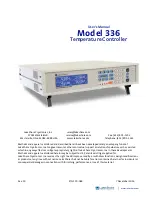
Safety
Information
Introduction
Product
Information
System
configuration
Mechanical
Installation
Electrical
Installation
Getting
Started
Basic
parameters
Running
the motor
Optimization
SMARTCARD
operation
Onboard
PLC
Advanced
parameters
Technical
Data
Diagnostics
UL Listing
Information
Unidrive SPM User Guide
155
Issue Number: 3 www.controltechniques.com
12 Onboard PLC
12.1 Onboard PLC and SYPTLite
The drive has the ability to store and execute a 4KB Onboard PLC
ladder logic program without the need for additional hardware in the form
of a Solutions Module.
The ladder logic program is written using SYPTLite, a Windows™ based
ladder diagram editor allowing the development of programs for
execution in Unidrive SP or SM-Applications Lite.
SYPTLite is designed to be easy to use and to make program
development as simple as possible. The features provided are a sub-set
of those in the SYPT program editor. SYPTLite programs are developed
using ladder logic, a graphical language widely used to program PLCs
(IEC61131-3). SYPTLite allows the user to "draw" a ladder diagram
representing a program.
SYPTLite provides a complete environment for the development of
ladder diagrams. Ladder diagrams can be created, compiled into user
programs and downloaded to a Unidrive SP or SM-Applications Lite for
execution, via the RJ45 serial communications port on the front of the
drive. The run-time operation of the compiled ladder diagram on the
target can also be monitored using SYPTLite and facilities are provided
to interact with the program on the target by setting new values for target
parameters.
SYPTLite is available on the CD which is supplied with the drive.
12.2 Benefits
The combination of the Onboard PLC and SYPTLite, means that the
drive can replace nano and some micro PLCs in many applications. The
Onboard PLC programs can consist of up to a maximum of 50 ladder
logic rungs (up to 7 function blocks and 10 contacts per rung). The
Onboard PLC program can also be transferred to and from a
SMARTCARD for backup or quick commissioning/start-up
In addition to the basic ladder symbols, SYPTLite contains a sub-set of
the function from the full version of SYPT. These include,
•
Arithmetic blocks
•
Comparison blocks
•
Timers
•
Counters
•
Multiplexers
•
Latches
•
Bit manipulation
Typical applications for the Onboard PLC include,
•
Ancillary pumps
•
Fans and control valves
•
Interlocking logic
•
Sequences routines
•
Custom control words.
12.3 Limitations
Compared with the Applications Modules (SM-Applications, SM-
Applications Lite and SM-Applications Plus) when programmed with
SYPT, the Onboard PLC program has the following limitations:
•
The maximum program size is 4032 bytes including header and
optional source code.
•
The drive is rated for 100 program downloads. This limitation is
imposed by the flash memory used to store the program within the
drive.
•
The user cannot create user variables. The user is only able to
manipulate the drive parameter set.
•
The program cannot be downloaded or monitored over CTNet. The
program is only accessible via the drives RJ45 serial
communications port.
•
There are no real-time tasks, i.e. the scheduling rate of the program
cannot be guaranteed. Applications Modules tasks such as Clock,
Event, Pos0 or Speed are not available. The Onboard PLC should
not be used for time-critical applications. For time-critical
applications Unidrive SP and an SM-Applications Plus, SM-
Applications or SM-Applications Lite should be used.
•
The program runs at a low priority. The drive provides a single
background task in which to run a ladder diagram. The drive is
prioritised to perform its major functions first, e.g. motor control, and
will use any remaining processing time to execute the ladder
diagram as a background activity. As the drive's processor becomes
more heavily loaded, less time is spent executing the program.
Figure 12-1 Onboard PLC program scheduling
The user program is scheduled for a short period approximately once
every 64ms. The time for which the program is scheduled will vary
between 0.2ms and 2ms depending on the loading of the drive's
processor.
When scheduled, several scans of the user program may be performed.
Some scans may execute in microseconds. However, when the main
drive functions are scheduled there will be a pause in the execution of
the program causing some scans to take many milliseconds. SYPTLite
displays the average execution time calculated over the last 10 scans of
the user program.
Major drive
functions
User
program
0
64
128
Time
(milliseconds)
















































